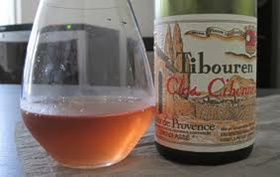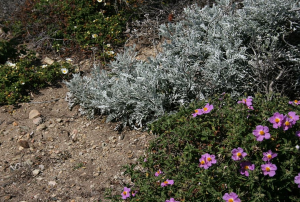Tibouren…it is a grape that is highly regarded, and with a historical precedence for use in the rosés of Provence. And yet, many of you have – perhaps – never heard of it!
The Tibouren grape is appreciated for making earthy, expressive wines redolent of that “wild, herbal, somewhat floral” aroma known as garrigue – named after the wild underbrush that grows in the limestone-rich soils of Provence and other regions around the Mediterranean basin. It is approved as a principal variety (allowed up to 90% of the blend) in the red and rosé wines of the Côtes de Provence AOC; it is approved as an accessory variety (allowed up to 20% of the blend) in the reds and rosés of the Coteaux Variois en Provence AOC.
The Clos Cibonne estate, located on the coast between Marseille and Nice, has one of the largest and oldest plantings of Tibouren in the world, and on occasion produces varietal wines from Tibouren in both red and rosé versions. The Tibouren vineyard at Clos Cibonne is almost 40 acres, much of it planted in 1930 or earlier.
Tibouren has avoided becoming too well known for several reasons – the first being that, despite its excellent reputation for making interesting wines, it is not widely grown. France has a total of just 1,100 acres, with more than half of those planted in Provence. The main reason for the small showing of the grape is – despite its being quite hardy in regards to pests and most vine diseases – that the grape has a tendency to early budding and susceptibility that pesky condition known as millerandage. CSW Students will recognize millerandage as a condition known as “abnormal fruit set” that results in grape bunches that have a high proportion of small seedless berries mixed in with normal, larger, seed-bearing grapes.
Like most vinifera grapes, Tibouren has an interesting and not-quite-verified history. It is said to have been introduced to the area around St. Tropez by an Italian ship’s captain named Antiboul. The grape first went by the name Antibloulen, which later led to the name “Tibouren.” Recent DNA testing, as reported by Jancis et al in their amazing book “Wine Grapes,” has shown it to be identical to the Rossese di Dolceacqua grape of Liguria. This would make sense, according to the story of the Italian sea captain!
Rossese di Dolceacqua (aka Tibouren)– 662 acres of it – is still grown, very close to the French border, in Liguria.

